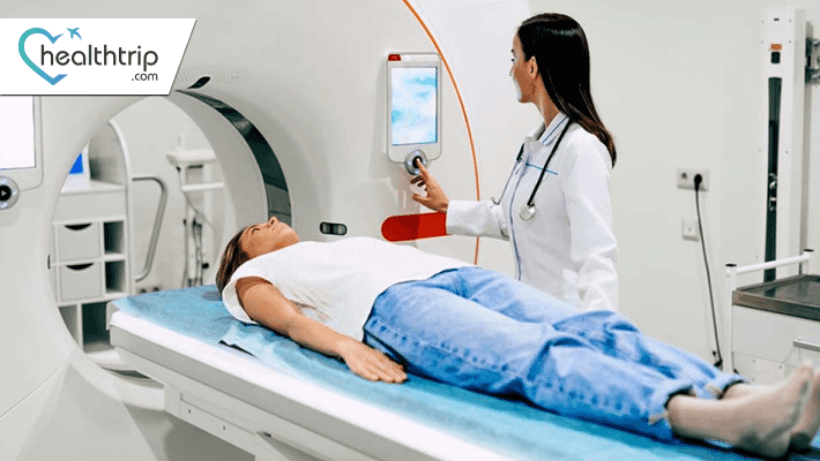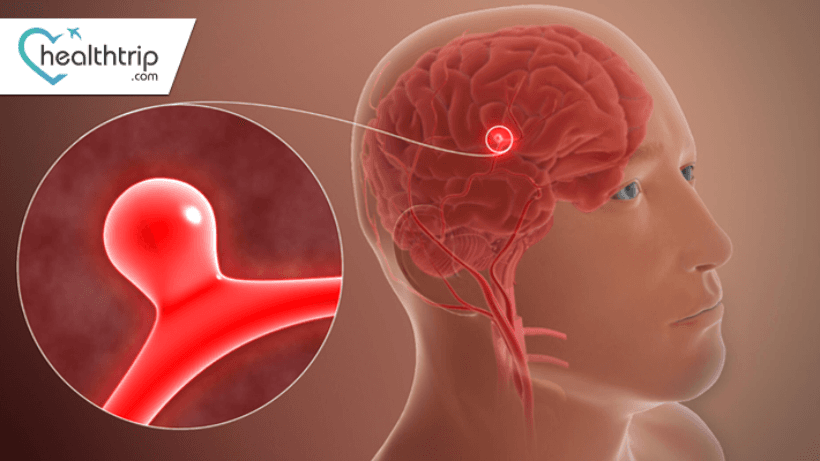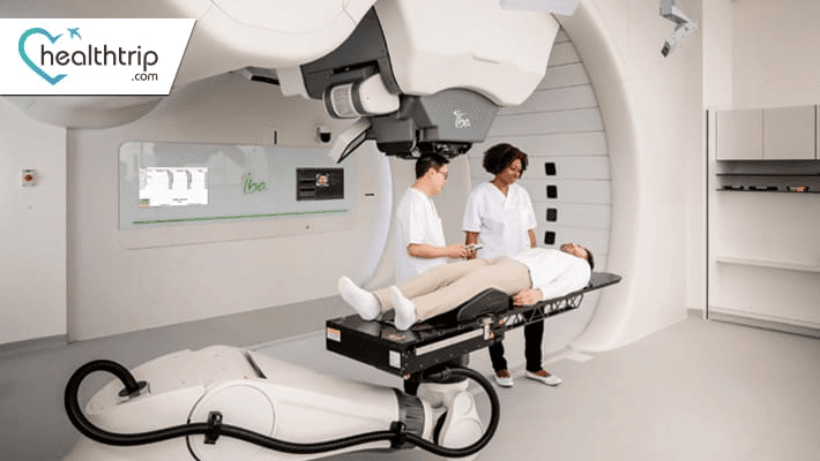
MRCP Test: Understanding Magnetic Resonance Cholangiopancreatography test
08 Sep, 2023
 Healthtrip Team
Healthtrip TeamMagnetic Resonance Cholangiopancreatography, or MRCP for short, is a specialized medical imaging technique. It's used to visualize the bile ducts and pancreatic ducts in the body. These ducts play a crucial role in the digestive process, and any problems or blockages in them can lead to various health issues. MRCP is incredibly important in the field of medical diagnosis. By providing detailed images of the bile and pancreatic ducts, it helps doctors identify a wide range of conditions and diseases. These can include gallstones, inflammation, tumors, or structural abnormalities within the liver, gallbladder, or pancreas. Having a clear picture of what's going on inside the body helps doctors make accurate diagnoses and develop appropriate treatment plans.
Most popular procedures in India
What is MRCP?
MRCP, or Magnetic Resonance Cholangiopancreatography, is a non-invasive medical imaging technique that uses magnetic resonance imaging (MRI) to create detailed pictures of the bile ducts and pancreatic ducts in the body. It's a safe and painless procedure that doesn't require the use of ionizing radiation or invasive procedures like endoscopy or surgery.
Wellness Treatments
Give yourself the time to relax
Lowest Prices Guaranteed!

Lowest Prices Guaranteed!
Types of MRCP
A. Traditional MRCP
Traditional MRCP is the standard form of this imaging technique. It involves a patient lying inside an MRI machine while a specialized coil is used to generate detailed images of the bile and pancreatic ducts. No contrast agents or dyes are used in this method.
B. MRCP with contrast
In MRCP with contrast, a contrast agent or dye is injected into the patient's bloodstream before the imaging procedure. This helps enhance the visibility of the ducts and provides even clearer images. It's especially useful when doctors need more precise information about the structure and function of the ducts or when evaluating certain conditions like tumors.
MRCP is a valuable tool in the world of medical diagnostics. It allows doctors to peer inside the body without invasive procedures, helping them identify and treat a wide range of conditions affecting the bile and pancreatic ducts. Whether it's the traditional form or MRCP with contrast, this imaging technique plays a vital role in ensuring accurate diagnoses and effective treatments.
Why is MRCP Done?
A. Medical Conditions and Symptoms Requiring MRCP:
- Gallstones: MRCP is frequently used to diagnose gallstones, a common condition characterized by the formation of small, hard deposits in the gallbladder or bile ducts. Symptoms may include abdominal pain, jaundice, and digestive issues.
- Biliary Strictures: When there is narrowing or blockage in the bile ducts, MRCP can help identify the cause, which may include inflammation, scarring, or tumors. Symptoms often include jaundice and abdominal pain.
- Pancreatitis: MRCP is useful in diagnosing acute and chronic pancreatitis, which involves inflammation of the pancreas. Patients may experience severe abdominal pain, nausea, and vomiting.
- Pancreatic Tumors: MRCP aids in the detection and evaluation of tumors in the pancreas or nearby structures. Symptoms may include abdominal pain, unexplained weight loss, and changes in digestion.
- Congenital Abnormalities: MRCP is valuable in identifying structural abnormalities in the bile and pancreatic ducts that have been present since birth. This can be important for patients with congenital conditions affecting these organs.
B. Benefits of MRCP Over Other Diagnostic Tests:
- Non-Invasiveness: MRCP is a non-invasive imaging technique, meaning it doesn't require surgical procedures or endoscopy, reducing the risk of complications and discomfort for patients.
- No Radiation Exposure: Unlike some other imaging methods such as CT scans, MRCP does not use ionizing radiation, making it a safer option, particularly for repeated diagnostic procedures.
- High-Quality Images: MRCP provides detailed and high-resolution images of the bile and pancreatic ducts, enhancing the accuracy of diagnoses and treatment planning.
- Functional Information: In some cases, MRCP can provide functional data, such as ductal flow rates, which can be valuable for understanding the functionality of the organs being examined.
- Alternative to Contrast: MRCP can be performed without the use of contrast agents when they are not suitable for a patient due to allergies or other concerns, ensuring a diagnostic option for a broader range of individuals.
- Improved Patient Comfort: Modern MRCP machines often offer faster scan times, reducing the amount of time a patient spends inside the MRI machine, improving their overall experience.
- Safety: MRCP is generally considered safe for most patients, with few associated risks compared to other diagnostic tests, contributing to patient well-being during the diagnostic process.
The MRCP Procedure
How MRCP is Done
- Magnetic resonance imaging principles: MRCP relies on the principles of magnetic resonance imaging. When placed in a magnetic field, certain atoms in the body (usually hydrogen atoms in water molecules) emit signals when exposed to radio waves. These signals are processed by a computer to create detailed images.
- Role of magnets and radio waves: The MRI machine contains powerful magnets that align the hydrogen atoms in the body. When radio waves are applied, the atoms temporarily shift out of alignment. As they return to their original positions, they emit signals that are detected by the MRI machine's sensors. By analyzing these signals, the computer constructs highly detailed images of the internal structures, including the bile and pancreatic ducts
What Does MRCP Diagnose?
A. Conditions and diseases detectable through MRCP
MRCP is an effective tool for diagnosing a range of conditions, including:
- Gallstones and other biliary obstructions
- Biliary strictures
- Pancreatitis and pancreatic duct abnormalities
- Pancreatic tumors
- Congenital abnormalities of the bile and pancreatic ducts
B. Imaging clarity and advantages
MRCP offers several advantages, including:
- Non-invasiveness: MRCP does not require surgery or invasive procedures.
- No ionizing radiation: Unlike some other imaging methods, MRCP uses magnetic fields and radio waves, eliminating the risks associated with radiation exposure.
- High-resolution images: MRCP provides detailed, high-quality images of the bile and pancreatic ducts, aiding in accurate diagnoses.
- Contrast enhancement: MRCP with contrast can provide even clearer images when needed.
- Safe and painless: Patients typically experience no pain during the procedure, making it a comfortable diagnostic tool.
B. What Happens Before the Test?
- Patient check-in and preparation: Upon arriving at the medical facility, patients will check in and complete any necessary paperwork. They may be asked about their medical history, allergies, and current health status. It's essential to provide accurate information to ensure a safe procedure.
- Explaining the procedure to the patient: A healthcare provider or technologist will explain the MRCP procedure to the patient, addressing any concerns and ensuring they understand what to expect during the test. This includes details about the MRI machine and any contrast agents if they will be used.
C. What Happens During the Test?
- Entering the MRI suite: The patient is escorted to the MRI suite, a room equipped with the MRI machine. Patients are usually asked to change into a hospital gown, remove any metal objects (like jewelry or watches), and lie down on the examination table.
- Positioning the patient: The technologist will position the patient properly on the examination table. It's important to remain still during the procedure to obtain clear images.
- Contrast injection (if applicable): If the MRCP with contrast is scheduled, a contrast agent may be injected intravenously. This contrast helps highlight the bile and pancreatic ducts for better visualization during the scan.
- The MRI scan process: The MRI machine creates a strong magnetic field and uses radio waves to generate detailed cross-sectional images of the abdomen. The patient will hear a series of loud tapping or knocking sounds during the scan, but ear protection is usually provided.
D. How Long Does an MRCP Take?
The duration of an MRCP can vary depending on the complexity of the study and whether contrast is used. Generally, the procedure may take between 20 minutes to an hour or more. It's important for patients to remain as still as possible to ensure the quality of the images.
In summary, MRCP is a valuable and non-invasive imaging technique that plays a crucial role in diagnosing various conditions affecting the bile and pancreatic ducts. Proper preparation and understanding of the procedure ensure a smooth and accurate examination for patients.
Interpreting MRCP Results
A. Understanding the MRCP report
Interpreting an MRCP report requires expertise, typically provided by a radiologist or a healthcare provider. The report will include detailed information about the findings, such as the presence of abnormalities, measurements, and any observed conditions. It may use medical terminology that can be challenging for a layperson to decipher, which is why it's essential to review the results with a medical professional. They will explain the implications of the findings and discuss any necessary follow-up steps or treatments.
B. Visual aids for result interpretation (if available)
In some cases, visual aids like annotated images or diagrams may accompany the MRCP report to help patients and referring physicians better understand the findings. These visual aids can provide a clear depiction of any abnormalities in the bile and pancreatic ducts, making it easier to grasp the significance of the results. Patients can ask their healthcare provider for these aids during the result discussion to aid in their understanding.
Risks Associated with MRCP
- Allergic reactions to contrast agents (rare)
- Potential impact on kidney function
- Claustrophobia or anxiety during the MRI scan
- Interaction with metal implants or devices
Applications of MRCP:
- Gallstone Detection: MRCP is a reliable method for detecting the presence and location of gallstones, which can cause pain and blockage in the bile ducts.
- Pancreatic Conditions: It plays a crucial role in diagnosing pancreatitis and assessing abnormalities in the pancreatic duct, aiding in treatment decisions.
- Biliary Strictures: MRCP effectively identifies narrowings or blockages in the bile ducts, often caused by conditions like inflammation or tumors.
- Tumor Identification: MRCP helps in early detection and assessment of tumors in the pancreas and surrounding areas, allowing for timely intervention.
- Congenital Abnormalities: MRCP can uncover structural issues in the bile and pancreatic ducts that have been present since birth, aiding in understanding and managing congenital conditions.
MRCP is a non-invasive imaging technique that is essential for diagnosing various bile and pancreatic duct-related conditions. Its advantages, such as safety, high-quality imaging, and patient comfort, it is a valuable tool in modern medicine, ensuring accurate diagnoses and effective treatment planning.
Related Blogs

AI-Enhanced Radiology: Faster and More Accurate Imaging in UAE
Radiology, the branch of medicine that uses imaging technologies like

Navigating Liver Cancer and its treatment in India
Liver cancer, a malignancy originating in liver cells, poses a

Advancements in Brain Aneurysm Treatment
In the world of medical science, breakthroughs and innovations continue

MRI vs. CT Scan: Which Is Best for Brain Tumor Diagnosis in the UAE?
When it comes to diagnosing brain tumors, medical professionals in

The Role of Artificial Intelligence in Healthcare Innovations
Healthcare is no stranger to challenges—diagnostic delays, strained resources, and

Everything You Need to Know About MRIs
A full body MRI is a non-invasive imaging test that










